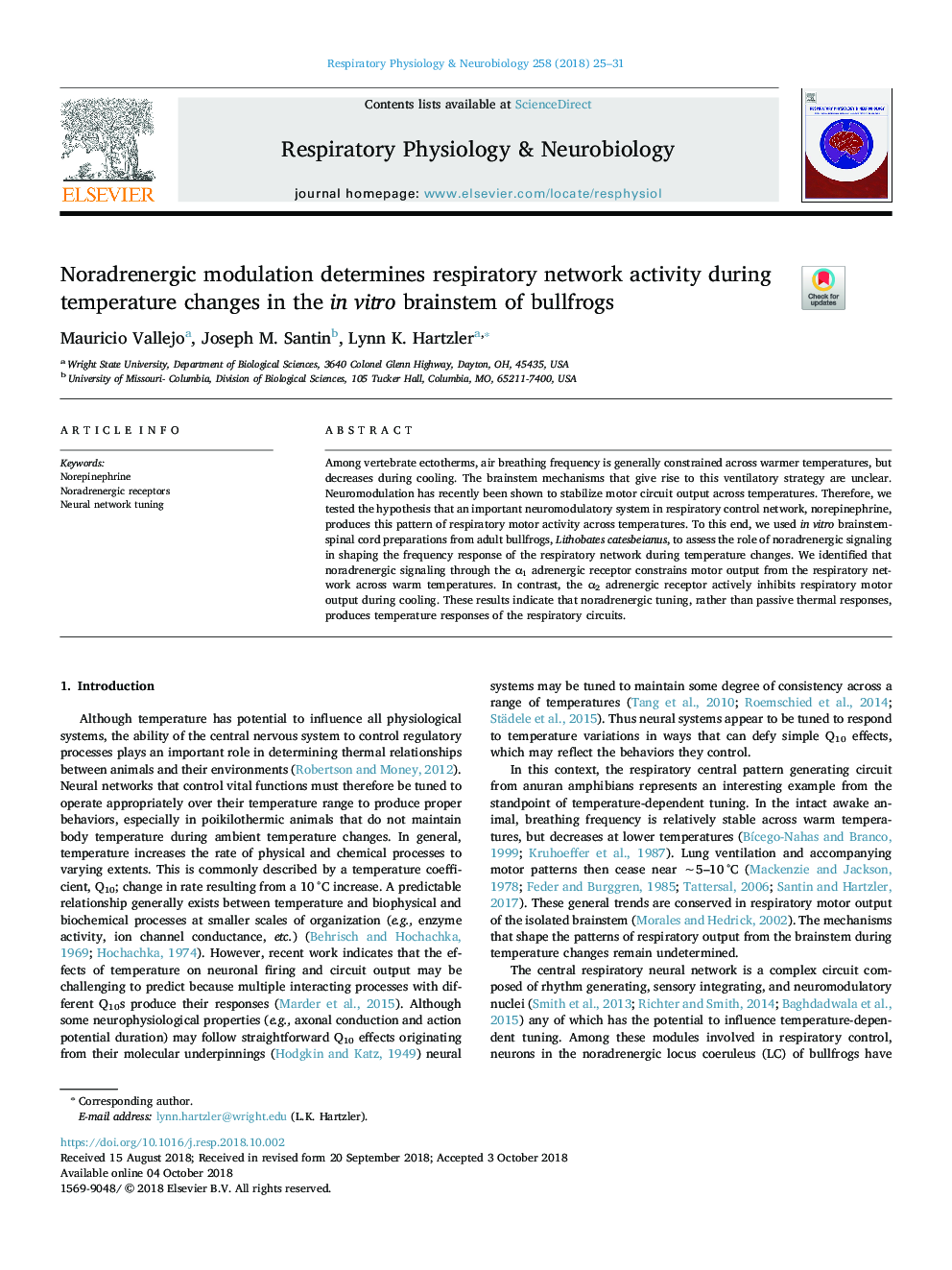| Article ID | Journal | Published Year | Pages | File Type |
|---|---|---|---|---|
| 11015202 | Respiratory Physiology & Neurobiology | 2018 | 7 Pages |
Abstract
Among vertebrate ectotherms, air breathing frequency is generally constrained across warmer temperatures, but decreases during cooling. The brainstem mechanisms that give rise to this ventilatory strategy are unclear. Neuromodulation has recently been shown to stabilize motor circuit output across temperatures. Therefore, we tested the hypothesis that an important neuromodulatory system in respiratory control network, norepinephrine, produces this pattern of respiratory motor activity across temperatures. To this end, we used in vitro brainstem-spinal cord preparations from adult bullfrogs, Lithobates catesbeianus, to assess the role of noradrenergic signaling in shaping the frequency response of the respiratory network during temperature changes. We identified that noradrenergic signaling through the α1 adrenergic receptor constrains motor output from the respiratory network across warm temperatures. In contrast, the α2 adrenergic receptor actively inhibits respiratory motor output during cooling. These results indicate that noradrenergic tuning, rather than passive thermal responses, produces temperature responses of the respiratory circuits.
Related Topics
Life Sciences
Biochemistry, Genetics and Molecular Biology
Physiology
Authors
Mauricio Vallejo, Joseph M. Santin, Lynn K. Hartzler,
